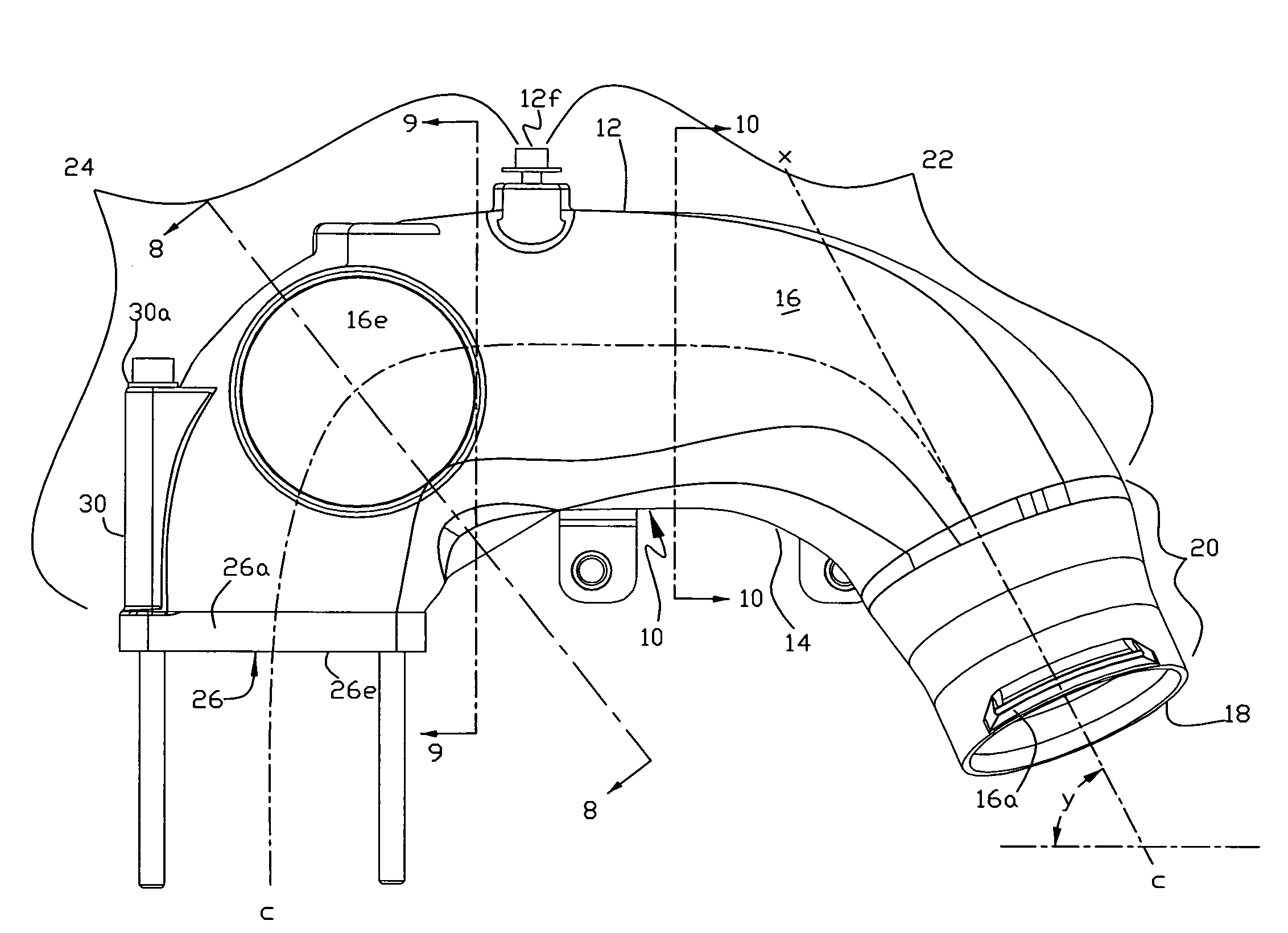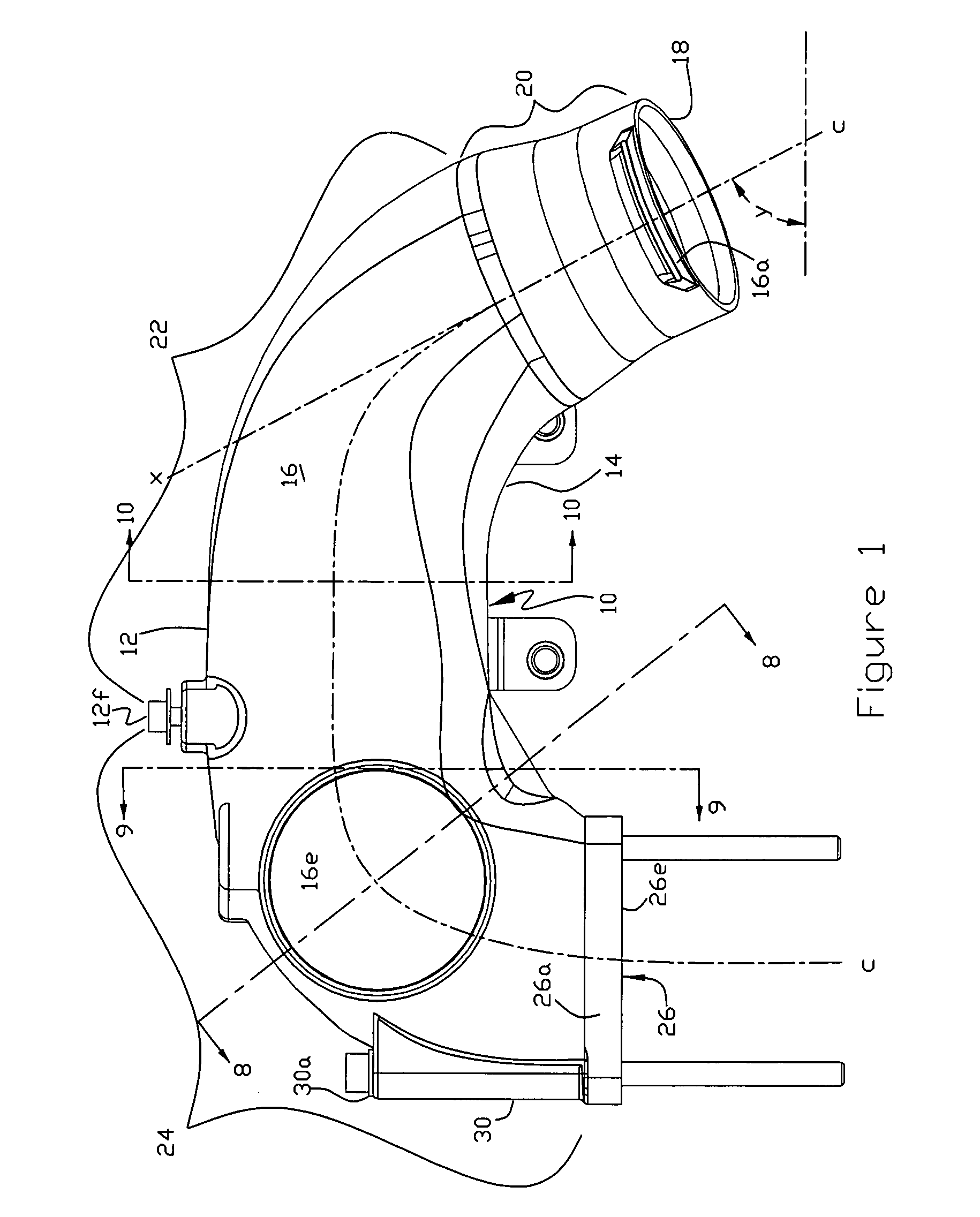Air intake manifold for coupling the output of a compressor to the air intake of an internal combustion engine
a technology for air intake manifolds and internal combustion engines, which is applied in the direction of machines/engines, combustion-air/fuel-air treatment, bends, etc., can solve the problems of stock manifolds deficient in several aspects, preventing the engine from achieving optimum performance, and less than optimum performance, so as to improve engine performance, increase air flow, and use the effect of engine operating power rang
- Summary
- Abstract
- Description
- Claims
- Application Information
AI Technical Summary
Benefits of technology
Problems solved by technology
Method used
Image
Examples
Embodiment Construction
[0025]Referring now to FIGS. 1-7, a preferred embodiment of the intake manifold 10 is in the form of a cast aluminum elongated tubular member having a top (upper), bottom (lower), and side walls 12, 14, and 16, respectively, formed in three principal sections starting at the upstream end defining a circular intake port 18 adapted to be connected to the outlet of a tubrocharger intercooler (not shown) via a conventional hose and clamp (not shown). Outwardly projecting ribs 16a serve to maintain the hose and clamp in place on the manifold once installed. The upstream end progresses to a short, generally straight, proximal section 20 (e.g., about 1″-3″ in length), thence to a sweeping curved central section 22 and finally to a more pronounced curved distal section 24 forming a 90° bend and terminating in a downstream end 26 surrounded by a peripheral rim 26a enclosing a generally rectangular outlet or discharge opening or port 28 (FIG. 4). By way of example only, the radius (r1) of the...
PUM
| Property | Measurement | Unit |
|---|---|---|
| Angle | aaaaa | aaaaa |
| Radius | aaaaa | aaaaa |
| Height | aaaaa | aaaaa |
Abstract
Description
Claims
Application Information
 Login to View More
Login to View More - R&D
- Intellectual Property
- Life Sciences
- Materials
- Tech Scout
- Unparalleled Data Quality
- Higher Quality Content
- 60% Fewer Hallucinations
Browse by: Latest US Patents, China's latest patents, Technical Efficacy Thesaurus, Application Domain, Technology Topic, Popular Technical Reports.
© 2025 PatSnap. All rights reserved.Legal|Privacy policy|Modern Slavery Act Transparency Statement|Sitemap|About US| Contact US: help@patsnap.com



